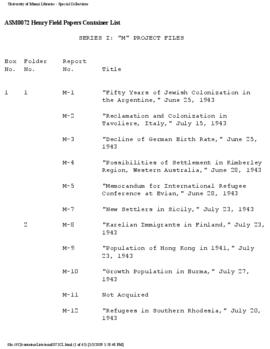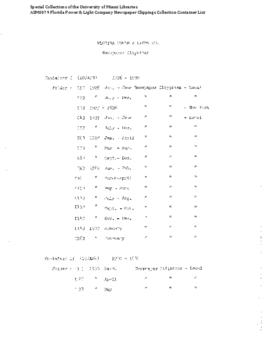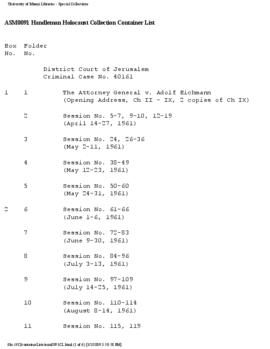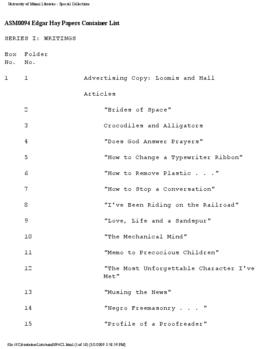- ASM0072
- Collection
- 1943-1974
The Henry Field Papers include the page proofs of the "M" project for FDR, a study of world population, migration and settlement undertaken to provide data for shaping post-war relocation strategies. The "M" Project papers contain the 666 studies done under the name as well as the history of the project. Franklin D. Roosevelt conceived the "M" project in 1940. The president believed that "...at the Paris Peace Conference decisions were made without adequate basic information," and intended the "M" Project studies to assist in relocating displaced groups after World War II in order to help prevent future conflicts.
Each of the "M" project studies originally included a brief summary, a longer summary with conclusions and a complete text. Six series including Reports, Translations, Memoranda, Administrative and Special Studies, comprised the final project report.
In the Report Series of the publication, Field includes summaries of reports which deal with population and settlement studies in specific areas as well as more general studies such as "Displacements of Population in Europe" concerning refugee problems created by World War I. (R-53, p. 41) The Translation Series, translated mainly from Russian and Japanese, concerns agriculture, colonization, population, industry and immigration in Russia, Japan and other countries. The Memorandum Series contains data on specific issues; many involve the Jewish population of European countries and others relate to the Palestine and Transjordan areas.The Lecture Series contains lectures given in New York City in 1944 on modern migrations (L1-L6), on immigration laws and policies (L7-L17) and Jewish migration agencies and organizations. Field states that the Administrative Series related primarily to the problems of Nazi Germany and included a section on "Women in Nazi Germany." He identifies the authors, Dr. and Mrs. Kempner, and explains that he did not write summaries for the studies "Since this series is completely out of date..."(p. 325) The summaries of only two studies appear in the Special Series. Both concern immigration problems in Russia. President Truman terminated the "M" Project before the completion of this series.
The Field papers also include manuscripts for three of the Field Research Reports. The first, an "Archaeological Report on North Arabian Desert Flint Implements" relates to a Peabody Field Museum expedition of 1928 and includes numerous prints of expedition photographs. The remaining manuscripts include an introduction to "Contributions to the Ancient History of the USSR..." reporting on a Peabody Museum expedition of 1960 and Field's "Mongolian Tour: A Personal Diary" published as a field research report in 1974.
Field, Henry, 1902-1986







